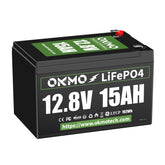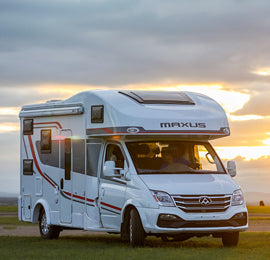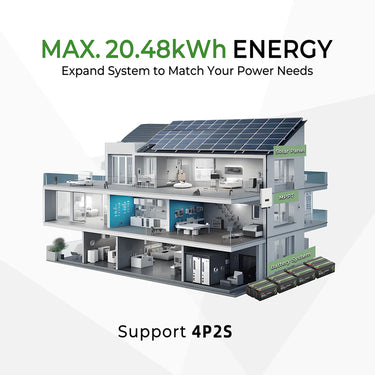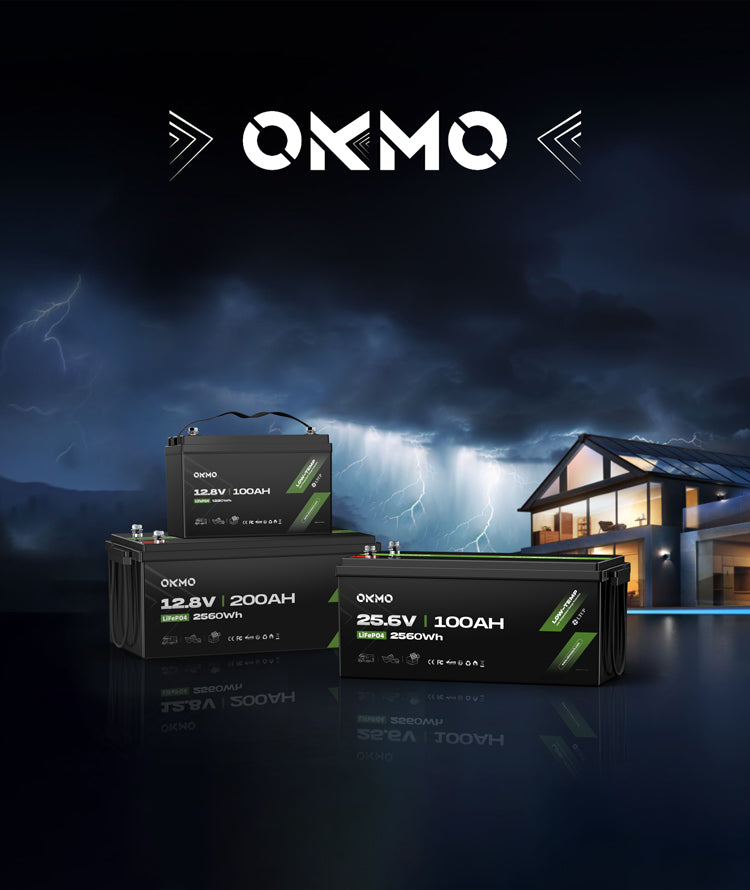Whole House Battery Backup: The Ultimate Guide to Building Home Energy Resilience
 Against the backdrop of intensifying climate change and increasingly frequent extreme weather events, the stability of power grids is facing unprecedented challenges. A severe storm, an unexpected equipment failure, or even overload during peak usage hours can lead to power outages lasting hours or even days. For modern households, a blackout means more than just darkness and inconvenience; it can lead to spoiled food, frozen pipes in winter, disrupted work-from-home setups, and even life-threatening situations for those reliant on medical equipment.
Against the backdrop of intensifying climate change and increasingly frequent extreme weather events, the stability of power grids is facing unprecedented challenges. A severe storm, an unexpected equipment failure, or even overload during peak usage hours can lead to power outages lasting hours or even days. For modern households, a blackout means more than just darkness and inconvenience; it can lead to spoiled food, frozen pipes in winter, disrupted work-from-home setups, and even life-threatening situations for those reliant on medical equipment.
It is in this context that the Whole House Battery Backup System has evolved from a luxurious high-tech gadget to a wise investment for families seeking safety, comfort, and energy independence. It is no longer just an emergency power source but the energy core of the modern smart home.
 I. What is a Whole House Battery Backup System?
I. What is a Whole House Battery Backup System?
A whole house battery backup system is a large-scale energy storage solution integrated into a home's electrical grid. Its core function is to automatically and seamlessly take over the power supply during a grid outage, providing continuous electricity to all or critical appliances in the home, ensuring normal daily life.
Think of it as an oversized, intelligent, and ever-ready "power bank" for your entire house. However, unlike small portable generators or power banks, it is a complex system engineering project comprising three core components:
-
Battery Pack: The system's "energy warehouse." Current mainstream technology uses lithium-ion batteries, particularly Lithium Iron Phosphate (LiFePO4), which has become the preferred choice for home energy storage due to its higher safety, longer cycle life, and better stability.
-
Inverter: The "brain and heart" of the system. Its core task is to convert the direct current (DC) stored in the batteries into the alternating current (AC) used by household appliances. More importantly, the smart inverter manages the entire system's operation: monitoring grid status, managing charging and discharging processes, and coordinating with solar power systems.
-
Automatic Transfer Switch (ATS): The system's "gatekeeper." It monitors the health of the power grid 24/7. The moment a power outage is detected, it automatically switches the home's power source from the public grid to the battery system within milliseconds. The process is so smooth that it's almost unnoticeable, preventing even sensitive electronics from restarting.
A Common Misconception: Many people confuse it with small portable generators. The latter require manual starting, produce noise and exhaust fumes, and require a continuous supply of fuel. In contrast, a whole house battery backup system is fully automatic, silent, produces zero emissions, and is a more modern, convenient, and reliable solution.
 II. Why Do You Need It? Three Core Values Beyond "Emergency"
II. Why Do You Need It? Three Core Values Beyond "Emergency"
-
Resilience: This is the most direct value. In the face of natural disasters or unexpected outages, your home becomes a safe "energy island," keeping the lights on, food fresh, and the internet running, providing priceless peace of mind and comfort.
-
Cost Efficiency: Its value is maximized for homes with solar photovoltaic (PV) systems. It can store excess solar energy generated during the day instead of selling it back to the grid at a low price. This stored energy can then be used during high-rate evening hours or peak demand periods, significantly reducing electricity bills. This "peak shaving" or "arbitrage" model is a key economic driver.
-
Environmental Contribution: By using self-generated clean energy more efficiently, it reduces reliance on fossil fuel power generation, lowers the household's carbon footprint, and contributes to a greener grid.
 III. How to Build Your Whole House Battery Backup System?
III. How to Build Your Whole House Battery Backup System?
Building a system that fits your needs requires careful planning and professional installation, primarily following these steps:
Step 1: Needs Assessment & Self-Questioning (The Foundation of Planning)
This is the most critical step, directly determining the system's scale and cost. Ask yourself:
-
"What is my goal?"
-
Basic Assurance: Only maintaining the operation of critical loads like the refrigerator, router, a few lights, and phone charging.
-
Living Comfort: Adding items like the heating system (blower fan), microwave, and TV to the basic list to ensure quality of life during an outage.
-
Whole House Coverage: Wanting all circuits to work as usual. Be aware: this typically requires a very high-power and high-capacity system, is very costly, and is highly inefficient for powering large appliances like dryers or electric water heaters.
-
-
"Which devices do I need to power, and for how long?"
-
List all appliances that must run during an outage.
-
Check their rated power and especially their starting power (for motor-driven devices like water pumps or AC compressors, starting power can be 3-5 times the rated power).
-
Calculate the total power requirement (kilowatts, kW - determines inverter size) and total energy requirement (kilowatt-hours, kWh - determines battery capacity).
-
Set a backup duration goal (e.g., 8 hours or 24 hours).
-
Step 2: Choosing the System Type and Technology Path
-
AC-Coupled System: The most common solution. The battery system is connected to the home's main electrical panel via a hybrid inverter. It integrates perfectly with existing or new solar systems for intelligent energy management.
-
All-in-One Solution: Examples include Tesla Powerwall, OKMO, etc. These products integrate the inverter, battery, and other components into a sleek package, making installation more straightforward and offering a unified user experience. They are a great "all-in-one" option.
-
DC-Coupled System: Typically designed alongside new solar installations. DC electricity generated by solar panels is stored directly in the batteries, offering higher efficiency.
Step 3: Equipment Selection & Professional Installation
-
Battery Chemistry: Prioritize Lithium Iron Phosphate (LiFePO4).
-
Capacity & Power: Choose a battery capacity and inverter power rating that matches the calculations from Step 1.
-
Professional Installation: This step must NOT be a DIY project. It is essential to hire licensed professional electricians and installation crews. They ensure the system is connected safely and compliantly to your home's complex electrical network and handle all necessary permits and utility interconnection applications.
Step 4: Monitoring & Optimization
Modern systems come with advanced smartphone apps, allowing you to monitor real-time power generation, consumption, and battery status. You can also intelligently set operating modes (e.g., power-saving mode, time-based control) to maximize the system's economic benefits.
 IV. Investment and Return
IV. Investment and Return
The cost of a whole house battery backup system typically ranges from $10,000 to well over $40,000, depending on the brand, capacity, and installation complexity. It's important to note that in many regions, governments offer tax credits or rebates for "solar + storage" systems to encourage renewable energy adoption, which can significantly reduce the final cost.
Its return on investment is not only the experience of uninterrupted power during outages but also reflected in long-term electricity bill savings. In areas with high electricity rates, significant time-of-use rate differences, or unreliable grids, the payback period can be considerably shorter.
A whole house battery backup system is far more than an emergency device; it is a revolutionary step towards energy independence and intelligent home management. It endows your household with resilience—a sense of calm and control in the face of external uncertainties. In the blueprint for building the home of the future, it is rapidly shifting from an optional extra to a core component worth serious consideration. Investing in a whole house battery backup system is an investment in uninterrupted peace of mind for your family.










